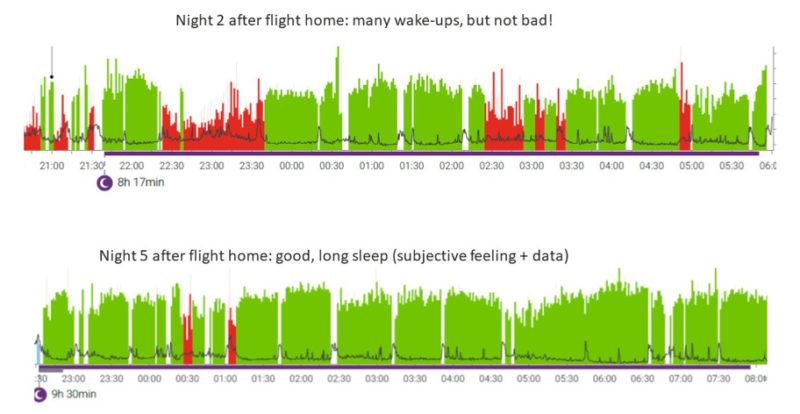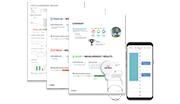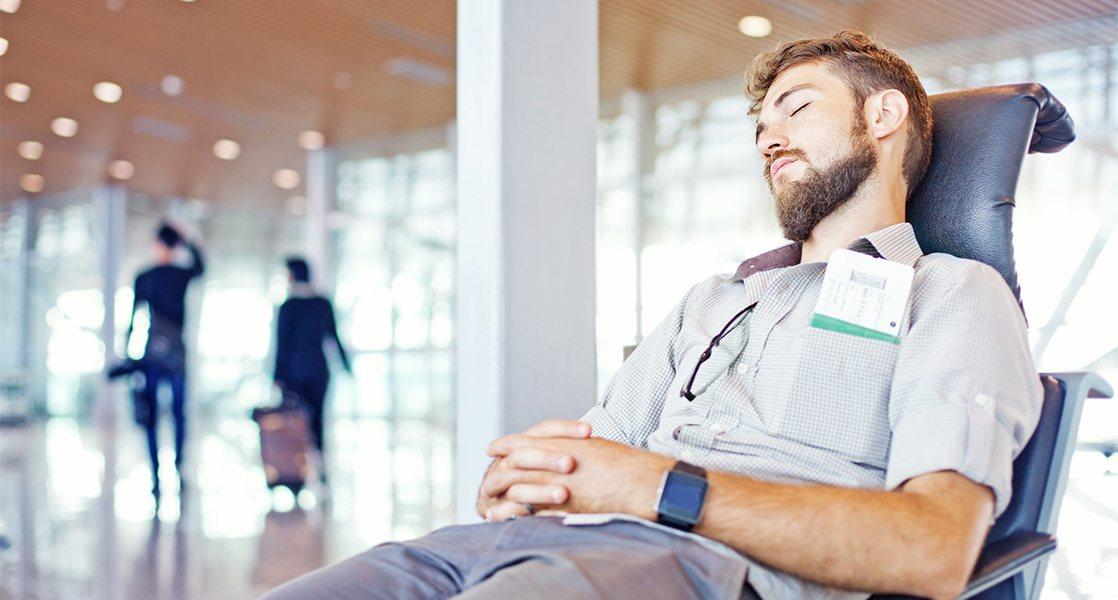
I’ve travelled overseas for personal and professional trips for years and have developed some good practices to make the travel a bit easier. But each trip is different and there is more to beating jet lag than following the ‘perfect’ guidelines. My most recent work trip saw me travel from Finland to Colorado for a conference, with seven days on the road, a nine-hour time difference and fairly high altitude (1,700m above sea level) setting the scene for my acclimation.
For this trip, I decided to collect some data (including heart rate, HRV, sleep and physical activity) to see how it reflected my subjective experience. In addition to wearing a Garmin 245, which includes sleep metrics as well as Firstbeat stress, recovery, Body Battery and exercise analytics, I conducted several Firstbeat Lifestyle Assessment measurements for a more detailed look at how my body was adjusting.
Gauging My Baseline
The first step was a baseline Lifestyle Assessment measurement that I did across a few standard workdays before travel, with no obvious external stressors. With HRV-based analytics, knowing your own personal baseline is important when it comes to drawing reliable conclusions from special circumstances.
For a challenged sleeper like myself, good sleep is not a sure thing and it’s not easy to differentiate between the factors affecting my sleep, but I did manage to log a couple of good nights during this initial measurement. My hypothesis was that overseas travel would be a big enough stressor that some interesting trends would emerge.
Doing the Right Things
I arrived in Colorado two days before the conference and was able to stick to some good jet lag guidelines. I hiked in the sunshine (exposure to exercise & daylight), stayed active during the day, didn’t nap, drank minimal alcohol, ate healthy food (trying to maintain good digestive health) and took melatonin before bed. I worked early in the morning and again in the late afternoon, energized by midday activity and time outdoors. The biggest ‘jolt’ came when I saw a rattle snake while hiking – I didn’t know I could still run that fast! During the conference, I was able to get some exercise and exposure to daylight by cycling to the venue and eating lunch on the outside terrace.
Check out the top 10 tips for better sleep →
Impact on Sleep
But, despite following these steps toward acclimation, the quality of my sleep was clearly affected. The amount of deep sleep (based on a Garmin metric) was significantly lower than my norm for several days after traveling and my Lifestyle Assessment results from Day 3 (Fig. 1) – a busy conference day – showed my resting HR was elevated and HRV during sleep was reduced compared to my baseline.
The restorative effect of sleep (an index combining the amount and quality of recovery plus sleep duration) was 32/100, compared to 93/100 in my baseline result. Subjectively, I felt that I slept quite well compared to the first two nights after my flight, which were a lot more broken up.
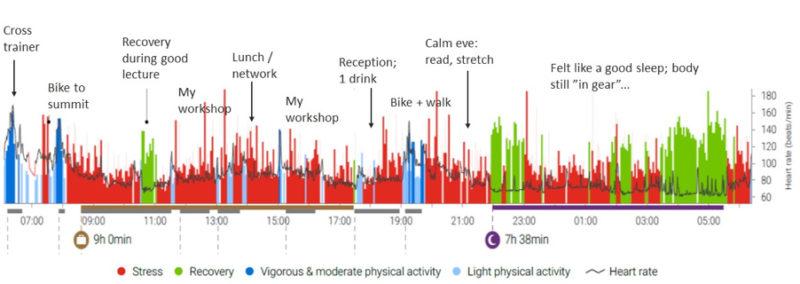
Fig. 1. Day 3 after travel. Exercise HR was higher than normal and recovery during sleep was compromised.
Of course, there is a lot more at play here than just jet lag! Exercise in altitude taxes the body more than a similar session at sea level, and a busy conference (speaking, meeting people, running workshops) takes its toll as well. Considering all that, the less than ideal sleep in Fig. 1 was not a surprise.
My baseline workday a week earlier had been more of a typical day, but otherwise comparable in terms of time working, sleep duration and amount of exercise. I did have a glass of wine at the conference reception before 6 pm (another factor known to reduce optimal recovery), but to ‘standardize’ its effect I also had a drink in my next Lifestyle Assessment measurement three days later (Fig. 2). Strictly in the name of science, of course.
As the week progressed, my Garmin data began to look similar to my typical results, and my Lifestyle Assessment the night before returning home showed good sleep, subjectively and physiologically (see graph below). Resting HR and HRV were back to my normal levels, and the sleep index was a ‘good’ 72/100.
Returning Home
Then it was time to fly back and flip the body clock once again. It’s supposed to be harder to fly east as you’re ‘going forward in time’, but I think returning to my normal time zone, altitude and routines worked in my favor. The acclimation went smoothly. Subjectively, I slept quite well from my first night back home and experienced minimal “jet lag fog” in the daytime.
Good habits like cycling to work, walking outdoors, no naps, sauna to relax, and my regular evening routine certainly helped. On night two, the physiological metrics were still a bit off (HR elevated, HRV down, less deep sleep, sleep index 60/100), but not as dramatically as when I went to the States. By night five, all the metrics were back to normal, and even slightly better than average (sleep index 95/100). Perhaps my corporate high-altitude camp worked its wonders, like it ideally does with athletes!?
So, do I recommend this type of data collection during travel? It can certainly provide some interesting insights and help identify things that work / do not work for you. But keep in mind that there are a lot of factors that affect our bodies on any given day, and even more so while traveling. The main thing is to focus on good practices! We cannot always stick to an ideal jet lag routine, but it’s worth aiming for.
My Top 5 Tips to Fight Jet Lag and Support Healthy Travel
1. Follow the daily rhythm of the time zone you are in
Get up in the morning and do your best not to sleep during the day during the initial ‘jet lag days’. Early bedtime is OK; don’t fight against sleep if it’s 9 pm and you are ready to crash.
2. Let the daylight work for you
Open the curtains when you get up and spend time outdoors during the day when possible.
3. Boost your natural melatonin production
Create a dark environment and avoid bright lights/electronics before bedtime. If desired, take extra melatonin 30-60 mins before bed.
4. Log some physical activity every day
Do some sightseeing on foot, use the hotel gym or pool, rent a bike. Keep the intensity low and comfortable, but getting your muscles working and heart rate up really helps!
5. Remember healthy nutrition and hydration
During flights, stick to familiar food (bring it with you if needed; instant oatmeal packs are a great standby!), drink a lot of water, avoid alcohol and excessive caffeine. We know that alcohol reduces restorative sleep dramatically, and since jet lag does the same, minimizing alcohol during the initial days of the trip is a no-brainer.
Do you travel a lot for your work? Would you like to know how small changes can help you recover better during your trip?
You might also be interested in

How to Reduce Negative Effects of Stress and Improve Vitality Through Nutrition
Wellness specialist Diana T Hooft explains how giving your body the proper nutrition it needs can benefit you physically and mentally.

The Big Picture of Wellness – Stress Management, Good Sleep and Nutrition Go Hand in Hand
Weight management and healthy eating are issues that wellness professionals face every day with their clients.
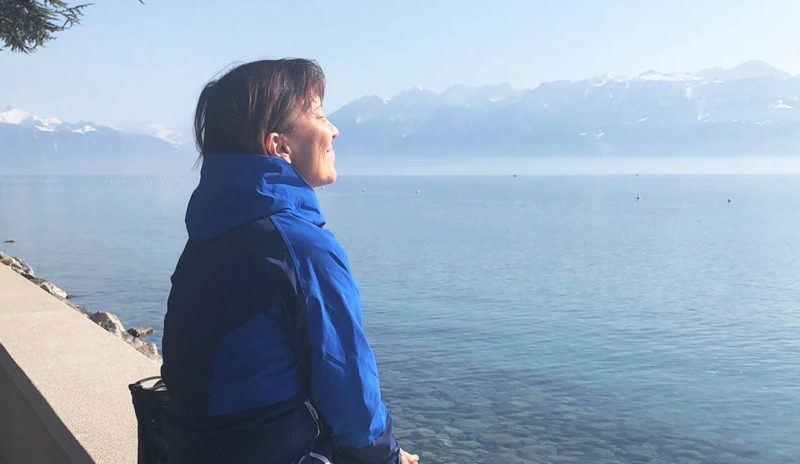
The Supercompensation of Life – How to Balance Load and Recovery
In this webinar, Firstbeat Exercise Physiologist, Tiina Hoffman, will discuss what supercompensation of life means and how lifestyle choices can impact health and performance.


